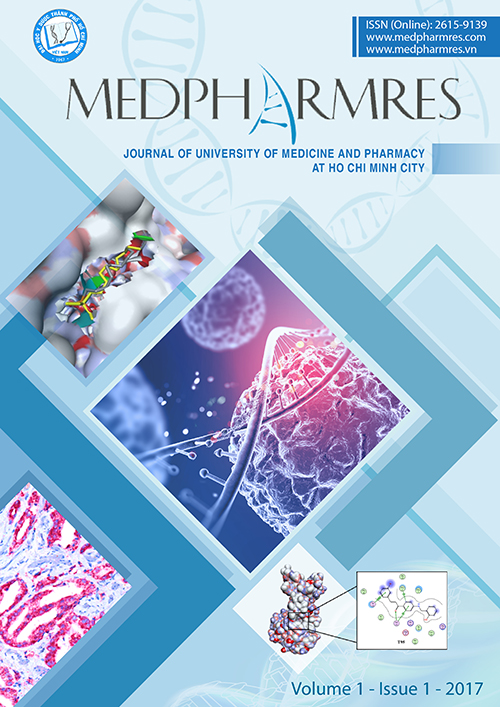Phytochemical Screening and Total Phenolics and Flavonoids Contents of Hibiscus Rosa Sinensis. L Cultivated in Viet Nam
Tóm tắt
Background: Phenolics and flavonoids are regarded as the highest potential of chemotherapeutic activities. This investigation was carried out to evaluate phytochemical and total phenolics content (TPC) and total flavonoids content (TFC) and Fourier-transform infrared spectroscopy (FTIR) spectral analysis of Hibiscus Rosa Sinensis L. extracts (crude extract, n-hexane extract, ethyl acetate extract, and methanol extract) for further applications in pharmaceutical development.
Method: Total phenolics were estimated by Folin-Ciocalteu method; while, Aluminum chloride was employed to quantify total flavonoids in the sample extracts. And, functional groups of Hibiscus Rosa Sinensis compound was determined using a FTIR-spectrophotometer.
Result: Results showed the leaves extracts to encompass the high amount of total phenolic and total flavonoid content. TPC values for crude extract, methanol extract, ethyl acetate extract and n-hexane extract were 57.09 ± 0.35 mg/g, 70.98 ± 0.03 mg/g, 21.31 ± 0.01 mg/g, and 18.45 ± 0.003 mg/g as gallic acid equivalent, respectively. Crude extract, methanol extract, ethyl acetate extract and n-hexane extract showed total flavonoids 26.87 ± 0.01 mg/g, 21.08 ± 0.03 mg/g, 21.70 ± 0.001 mg/g, 14.95 ± 0.02 mg/g as rutin equivalent. FTIR spectra of four extracts were comparable and showed the presence of nitro compounds and ring aromatic compounds.
Conclusion: Our results indicate the potential of exploiting Hibiscus Rosa Sinensis leaves as a source of chemotherapeutic compounds, and it is worthy doing further researches on isolated bioactive compounds for developing novel functional foods or new drugs.

